The secret history of women's football
- Published
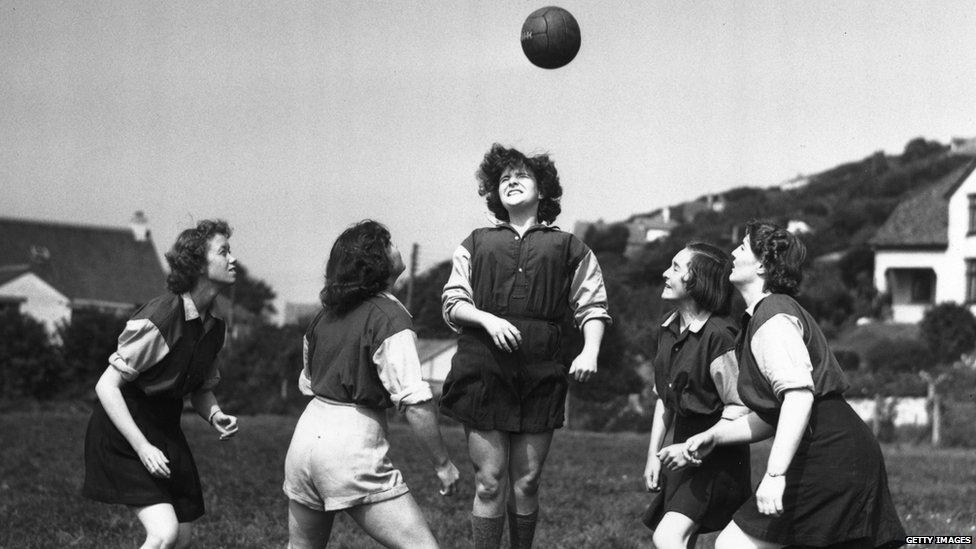
Women's football matches once pulled bigger crowds than most men's games - sometimes more than 50,000.
In the 1920s the sport flourished with around 150 women's teams in England.
But then the women's game was effectively banned, with the FA at the time saying the game of football is "quite unsuitable for females".
It was another half century until women's football got back on its feet and a key reason it lags behind the men's game today.
As England start their World Cup campaign in Canada, we look at some facts you may not know about the women's game.
This woman was the Raheem Sterling of her day

Lily Parr throwing a javelin during training. She was the first woman to be inducted into the National Football Museum Hall of Fame, in 2002
Lily Parr was a winger and one of the first female professional players.
She played for the Dick Kerr's Ladies team which got its name from the munitions factory in Preston where most of the team worked during World War One. They were the first women's team to play wearing shorts and the first to go on an overseas tour.
Lily was also a smoker and her wages were supplemented by packets of Woodbine cigarettes.
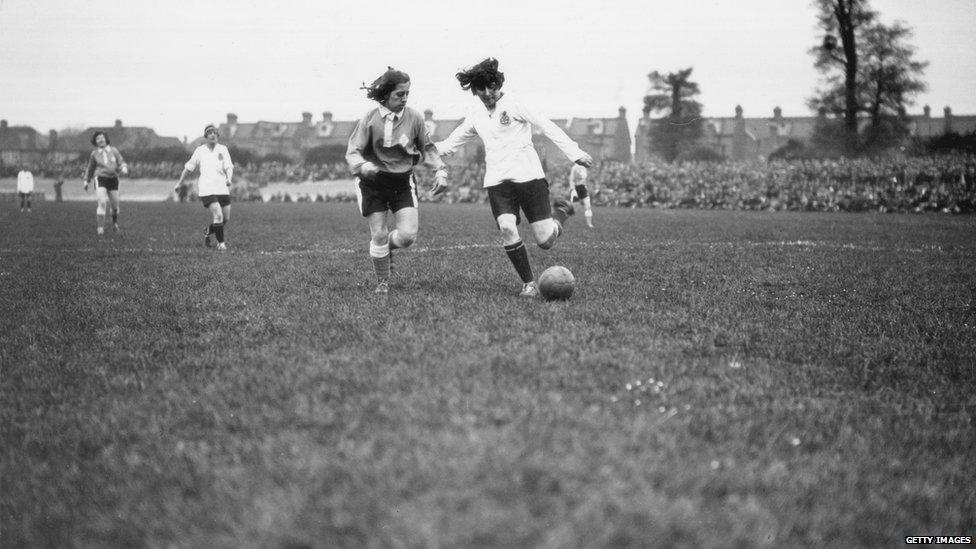
The Dick Kerr's Ladies team take on the French Ladies International team at Herne Hill, London
Women's matches pulled in enormous crowds
There was a huge growth in women's football during the war when women were called upon to do factory jobs left by the men who had gone to fight.
On Christmas Day in 1917, 10,000 spectators watched two women's teams playing at Preston.
And when Dick Kerr's Ladies played St Helen's Ladies on Boxing Day 1920 they pulled in a crowd of 53,000 at Everton's Goodison Park ground, with thousands more fans locked outside. Everton men's highest attendance this season (2014/15) was 39,000.
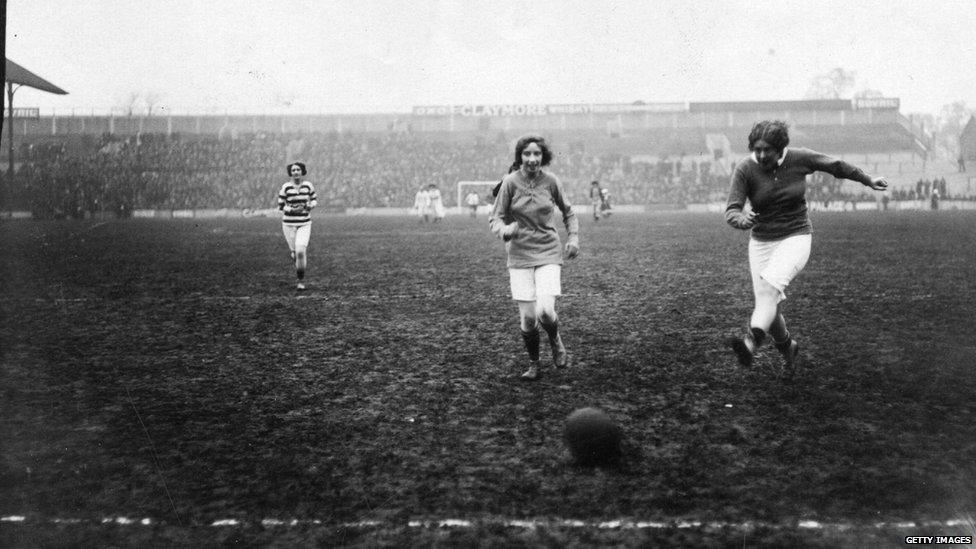
Play during the Theatrical Ladies Football match at Tottenham, north London, in 1912
But then the women's game was effectively banned
On 5 December 1921, the Football Association banned women from playing on FA-affiliated pitches which meant stars like Lily Parr could no longer play at grounds with spectator facilities.
The FA at the time said "the game of football is quite unsuitable for females and ought not to be encouraged".
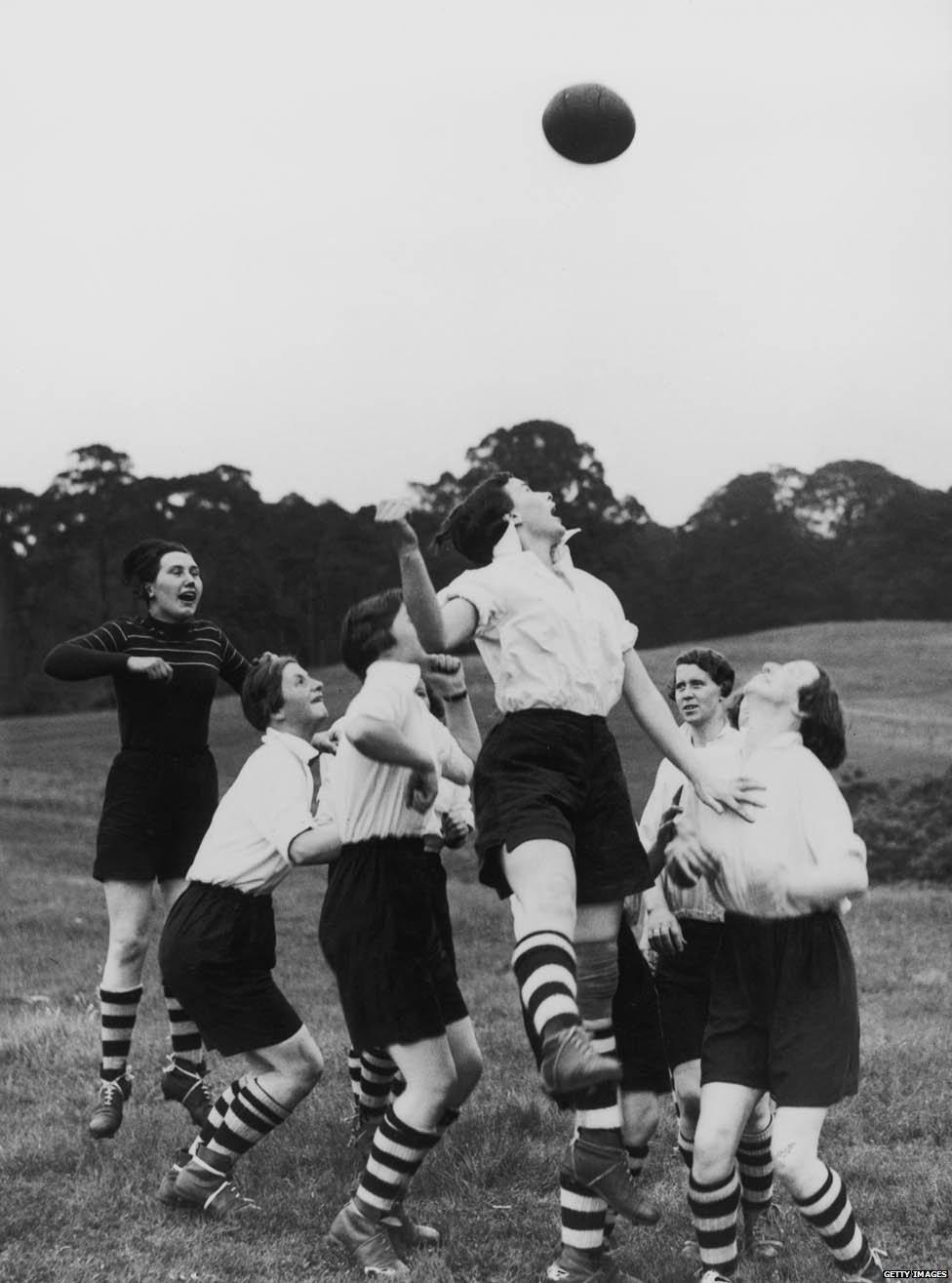
Preston Ladies training in 1939

Joan Briggs, England centre forward, training in July 1959
In 1971 the ban was finally lifted following the formation of the Women's Football Association (WFA) a couple of years earlier.

Girls playing in 1970, a year before the effective ban on women playing in professional stadiums was lifted
Finally women could treat football as a career, 50 years later
The Sex Discrimination Act of 1975 made it easier for women to train to become professional referees.
A profile of Joan Briggs, "celebrated star of the ladies' soccer world".
It has always been pretty tough to watch women's football on television with the first TV reports of the Women's FA Cup final results in the 1970s.
In 1989 Channel 4 started to provide regular coverage of women's football.
And the FA outlined its plans to develop the women's game from grassroots to elite level in 1997.

The England team in 1997, when the FA set out a new mission to develop the women's game
2011 saw the inaugural season of the Women's Super League.
And as of September 2014, there were 2.6 million women and girls playing football in England.
In November more than 55,000 tickets were sold for England women's match against Germany, far more than the 40,181 that saw the previous Wembley friendly involving England's men.
And Sport England is pledging to spend £30m on grassroots football by 2017, with a focus on getting - and keeping - girls and women on the pitch.
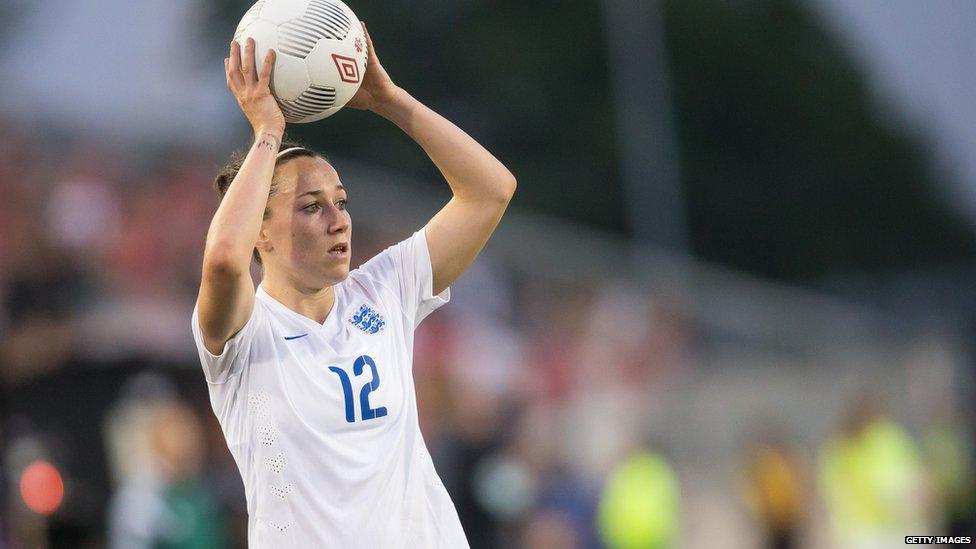
England player Lucy Bronze prepares for a throw-in during a World Cup warm-up match
Follow @BBCNewsbeat, external on Twitter, BBCNewsbeat, external on Instagram and Radio1Newsbeat, external on YouTube and you can now follow BBC_Newsbeat on Snapchat